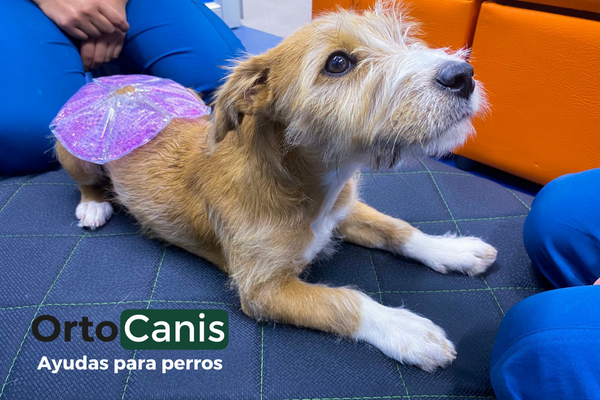Thermotherapy for dogs
Thermotherapy for dogs is a technique based on the application of surface heat on the injured area for therapeutic purposes.
Types of thermotherapy according to your scope
- Surface use of seed bags, microwave gel bags, warm wet towels and infrared lamps. In this way what we get is that the heat is absorbed in a cutaneous way and can reach deeper tissues through conduction.
- Deep methods, such as ultrasound, shortwave and microwave; These produce biological effects by directly heating the tissues in depth.
Main effects of thermotherapy for dogs
- Repairing, the increase in temperature causes vasodilation and increased blood flow. This produces an increase in oxygen and nutrients to the injured tissue, favoring healing and tissue repair. That is why we should never apply this technique in active hemorrhages.
- Sedative, heat favors the extension of muscles and tendons while reducing muscle spasm; thus achieving greater extensibility of connective tissue and less joint stiffness.
- Anti-inflammatory, hyperemia favors vasodilation, increased blood circulation, the supply of oxygen and nutrients and the elimination of metabolites and waste products.
- Analgesic, stimulation of nerve endings in the skin interferes in blocking painful sensations.
Contraindications of thermotherapy
- Infections and acute inflammations , in the first 48-72 hours we must avoid this therapy, since in this phase we seek to control vasodilation.
- Cardiovascular diseases, thrombophlebitis, acute phlebitis or peripheral vascular disease , heat increases blood flow in the area of application and lowers blood pressure, aggravating these pathologies.
- Sensory deficit , before applying this therapy we must evaluate the thermal and painful sensitivity of the area to be treated, due to the sedative effect of thermotherapy on the nervous system and the risk of burns.
- Active hemorrhages, heat increases blood flow aggravating this picture.
- In areas with blood risk deficit , thermal elevation increases metabolic demands, leading to ischemic necrosis.
- Malignant tumors, as it can increase the rate of tumor growth.
- Skin lesions or open wounds, the risk of burns and infections makes these pathologies incompatible with therapy.
by María Jesus García Serrano





Leave a Reply
Want to join the discussion?Feel free to contribute!